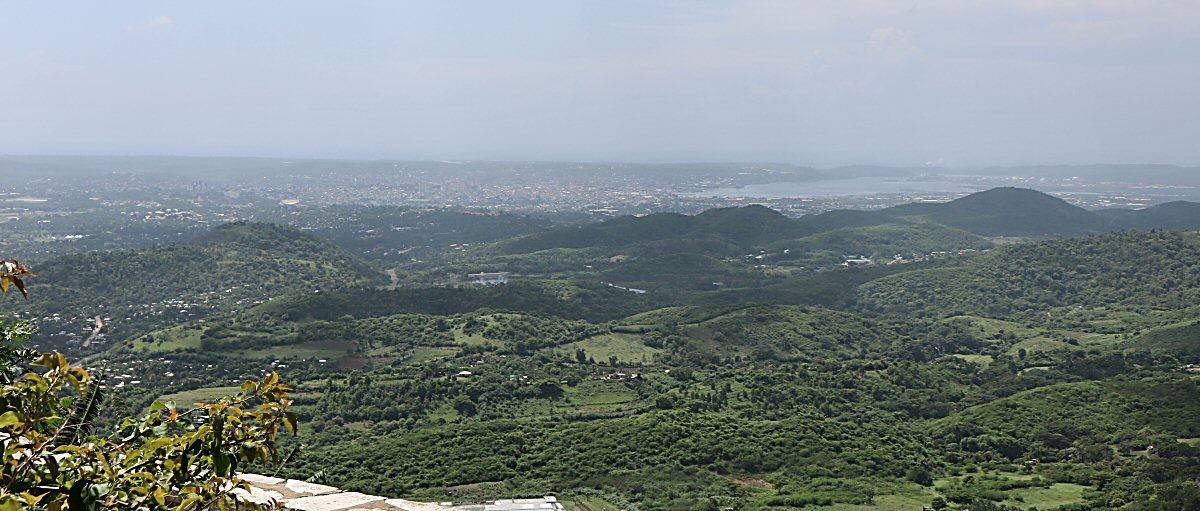Many of the attractions surrounding
Santiago are east of the city, and you’ll need at least a couple
of days to do them justice. Cool and fresh, the mountains of the
Sierra de la Gran Piedra make an excellent break from the harsh
Santiago heat, and the giant Gran Piedra is an extraordinary
lookout point. Nearby, there’s the atmospheric, little-visited
Museo Isabelica, set on one of several colonial coffee
plantations in the mountains; and the formerly lovely Jardín
Botánico, totally wrecked by Hurricane Sandy and closed to the
public for the foreseeable future.
As you move further east, you will
encounter some places with historical importance, such as Granjita Siboney and Museo de la Guerra Hispano-Cubano-Norteamericana.
Playa Daiquirí which is historically important for the Spanish
Cuban-North American War, is used by the Ministry of Interior as
a holiday camp for the military personnel; consequently, the
beach is closed to foreign visitors.
Some tourist attractions, among them
a vintage car collection (Museo Nacional del Transporte), Valle
de la Prehistoria and Acuario Baconao lined up around the road
to the natural wonder Laguna Baconao.
Santiago’s east coast has a number of
beaches (Playa Siboney, Playa Verraco, Playa Cazonal, Playa
Caletoncito). However, for those who have limited time in
Santiago and want to swim in the sea, Santiago's western beaches
(especially Playa de Caletón Blanco) are recommended.
PARQUE NACIONAL DE LA GRAN PIEDRA
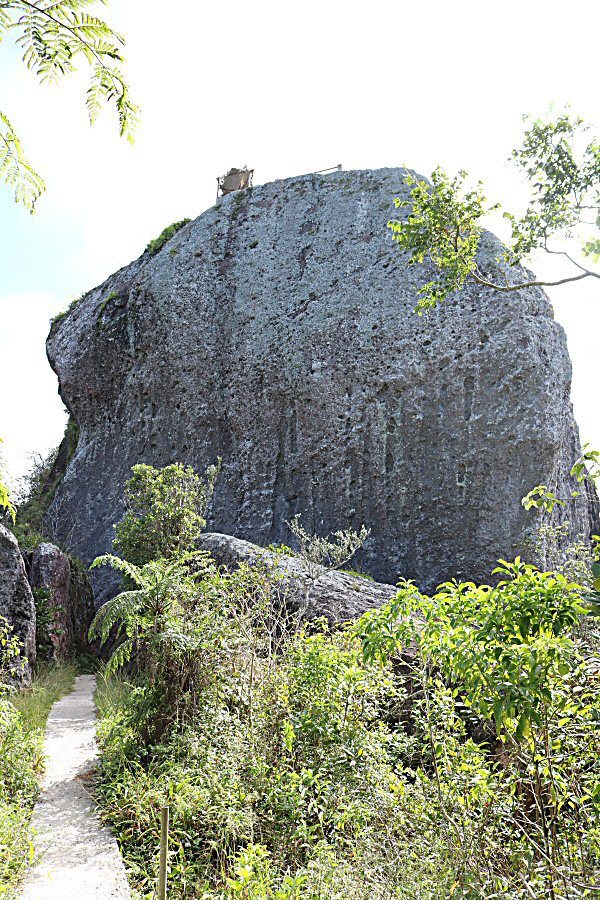 Since the problematic Gran Piedra road is under repair,
it is not allowed to go up the mountain by car. Road repair is
expected to be completed in early 2024. Therefore, do not go
here by your private car without asking the taxi drivers.
Since the problematic Gran Piedra road is under repair,
it is not allowed to go up the mountain by car. Road repair is
expected to be completed in early 2024. Therefore, do not go
here by your private car without asking the taxi drivers.
Parque Nacional de la Gran Piedra constitutes the eastern part
of the Sierra Maestra Mountain system, well known by the
struggle for independence, as well as its gigantic stone mass,
La Gran Piedra (the Big Rock). The mountains of La Grand Piedra
(Sierra de la Gran Piedra) have geomorphological and ecological features that increases its
importance in the perspective of tourism. The existing climate
in the area that sometimes comes down to four degrees
centigrade, and the expansion of a dense frog, even in the
summer, that prevents to see any object more than one meter
away, are some of the surprises with which the visitors may be
confronted.
Parque Nacional de la Gran Piedra is a woodland, rich in animal
and plant life. Its exceptional flora is 22% of endemic origin,
with 222 species of ferns, 352 species of orchids, eucalyptus
and pine trees, cypresses, and a variety of
fruit trees, among them apples and peaches. The woodpeckers,
thrushes, cartacubas (Cuban toddies), sparrows, hawks, mayitos
(Cuban blackbirds), Cuban national bird, the tocororo (Cuban
trogon) are some of the animals of the rich fauna that contains
926 species.
Only one kilometer away is the Botanical Garden, where
cultivated species such as the bird of paradise (strelitzia),
the dahlia, the magnolia, and the partners of the local flora
could be seen; unfortunately, this area is largely damaged by
the hurricane and did not recover yet.
There is no public transport on
the mountain road, but taxis are available to take you to the
foot of the Gran Piedra stairway, charging about 20 $ from the
Céspedes park. Choosing a new taxi is highly recommended, as old
cars have to stop several times on the way to cool the engine.
As the route ascends, temperate vegetation such as fir and pine
trees gradually replace the more tropical palms and vines of the
lower levels.
La
Grand Piedra can be accessed through Restaurante de La Gran
Piedra (daily 0:08 – 17:00) where you will pay 150 CUP for the
entrance (including 1 free drink) and take the stairway that
leads up to the big rock. The stairway, consisting of 459 steps,
is wide enough, and has three plateaus to take a breather. It is
an invigorating climb, escorted by the dense vegetation of
ferns, orchids, eucalyptus, and other species, as well as the butterflies. In cloudy weather
you will be wrapped in dense fog.
La
Grand Piedra is a huge volcanic rock, located on the top of the
mountain at 1.214 meters above the sea level. It is 51 meters
long, 25 meters high and 30 meters wide, with a calculated
weight of 63.000 tons. Some legends are
present attributing its formation due to the impact of a
meteorite that had fallen millions of years ago on the
territory. The most rational explanation is to consider its
formation secondary to an explosion of an underwater volcano.
The first settlements in this area were found at the end of the
18th and at the beginning of the 19th centuries by the French
emigrants that came to this region to build coffee plantations.
The ruins of dozens of these coffee plantations are still preserved.
The top of
the rock forms a natural viewing plateau for Sierra Maestra
mountains, with views out to the sea on clear days. La
Grand Piedra, although lower than the hill Turquino has unique conditions, since it offers the view of the most
beautiful landscapes in the territory. On the other hand, it
allows to see all the coastline of the southeast, where the
beaches of the Baconao park extend, together with the high
buildings of the city of Santiago de Cuba.
Ascending
the rock is best made before the noon to have a better chance of
clear views. It is said that the glow of the lights of the
Republic of Haiti can be seen at clear nights.
La Grand Piedra was declared National Monument in 1991.
On the top of the rock, you have two choices to explore
the area; either you can continue with the uneven, rugged path
to the Cafeteria 1234 (about 0,5 km), or you can go down and
take the car to the parking area in front of this cafeteria. The
first option is not recommended for the people unfamiliar with
hiking. About 1,5 km after the cafeteria, you will arrive the Museo Isabelica that was opened in the ground of Cafetal La
Isabelica (coffee plantation).
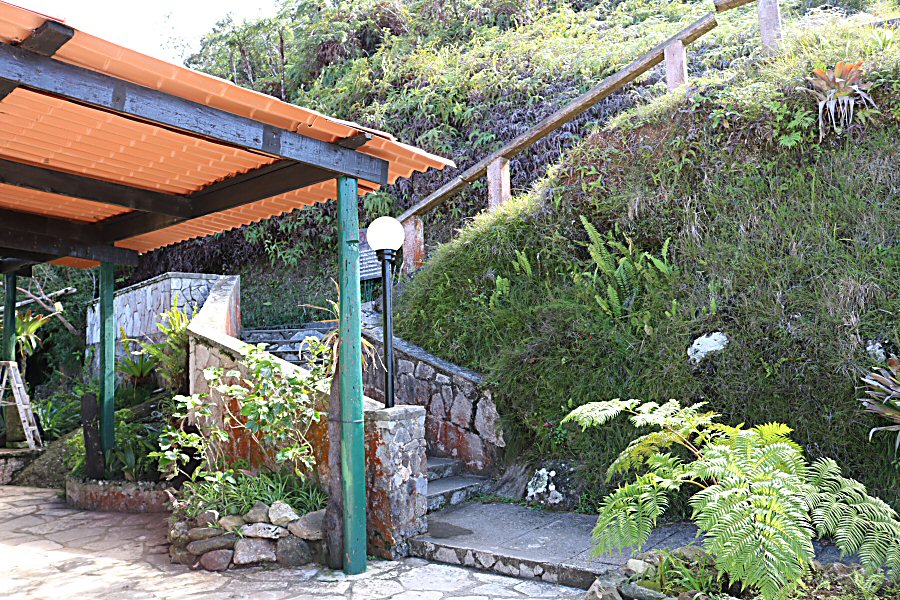
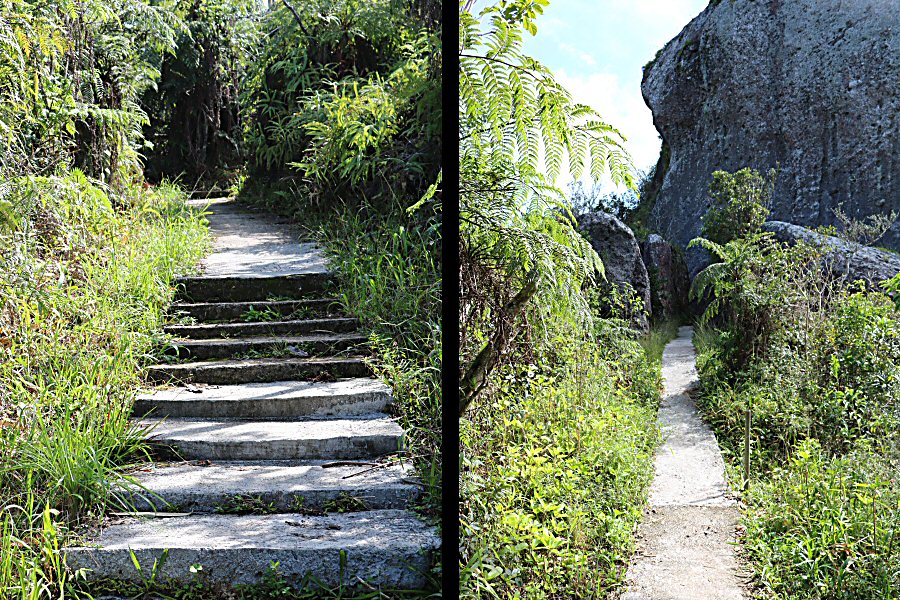
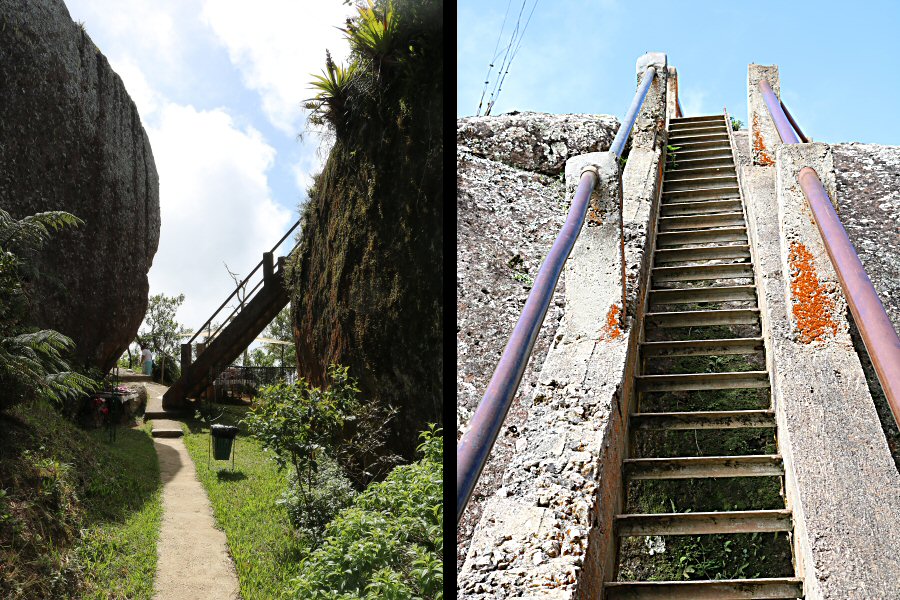
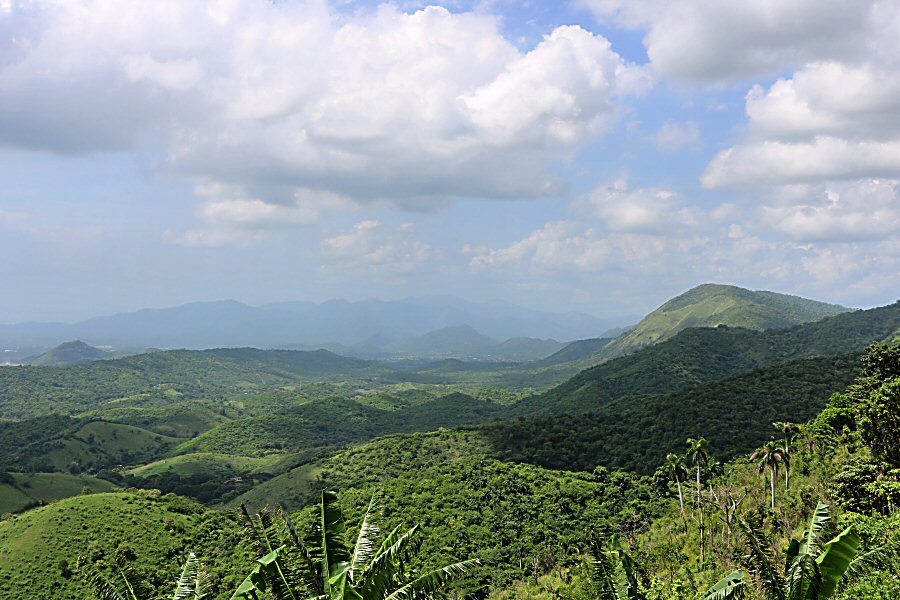
 Since the problematic Gran Piedra road is under repair,
it is not allowed to go up the mountain by car. Road repair is
expected to be completed in early 2024. Therefore, do not go
here by your private car without asking the taxi drivers.
Since the problematic Gran Piedra road is under repair,
it is not allowed to go up the mountain by car. Road repair is
expected to be completed in early 2024. Therefore, do not go
here by your private car without asking the taxi drivers.